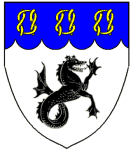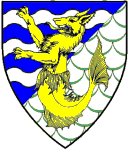| View previous topic :: View next topic |
| Author |
Message |
John S
Joined: 06 Jul 2006
Posts: 277
City/Region: Sterling
State or Province: AK
C-Dory Year: 2000
C-Dory Model: 24 Tomcat
Vessel Name: TomCat
Photos: TomCat
|
 Posted: Fri Sep 22, 2006 4:54 am Post subject: Battery terminal overload Posted: Fri Sep 22, 2006 4:54 am Post subject: Battery terminal overload |
 |
|
Wonder if anyone has any ideas.
My battery terminals are loaded with wires, with more on the way. Every accessory wants direct access to the battery. The windlass, the wallas stove, the pot puller, the inverter, etc, etc.
The battery is loaded with wires going directly to it.
Are there any other options? There must be a better way to attach all these power consumers to the battery. Some sort of battery buss or something? I have a Tomcat with a battery installed in each pontoon.
Appreciate any ideas.
John |
|
| Back to top |
|
 |
Sea Wolf
Joined: 01 Nov 2003
Posts: 8650
City/Region: Redding
State or Province: CA
C-Dory Year: 1987
C-Dory Model: 22 Cruiser
Vessel Name: Sea Wolf
Photos: Sea Wolf
|
 Posted: Fri Sep 22, 2006 6:30 am Post subject: Posted: Fri Sep 22, 2006 6:30 am Post subject: |
 |
|
John S-
Here's one LINK
Here's one more LINK (bargain, ebay store)
Joe.
_________________
Sea Wolf, C-Brat #31
Lake Shasta, California
  
"Most of my money I spent on boats and women. The rest I squandered'. " -Annonymous |
|
| Back to top |
|
 |
ffheap
Joined: 02 Nov 2003
Posts: 733
City/Region: Hingham
State or Province: MA
C-Dory Year: 1983
C-Dory Model: 22 Angler
Vessel Name: Inn-The-Water
Photos: Inn-The-Water
|
 Posted: Fri Sep 22, 2006 8:20 am Post subject: Posted: Fri Sep 22, 2006 8:20 am Post subject: |
 |
|
John,
Every one of us ends up with the same problem. What we have to do is redesign our electrical system by using buss bar strips and fuse panels. Do not buy the cheap stuff. We almost need a buss bar for every size wire. Example, the wire size for the Windless is larger than the lights. In redesigning the system, we should plan for additional additions that we have not thought of yet.
SeaWolf has given you a start. Do not short change yourself on the design and product.. Consult good books like Nagal Caulder's books on boat electricity.
Also think about adding things like battery gages and electricaloutlets
that you may need in the future. My GPS uses a cigerette lighter plug so I added a cigarette lighter plug. I should hard wire it and put it on its own fuse circuit
Good luck. I am in the same boat as you. We just keep adding stuff, referred to by a Lady Store Manager of West Marine as "Boat Jewelry" until we overload everything.
Fred
_________________
Fred |
|
| Back to top |
|
 |
Sea Wolf
Joined: 01 Nov 2003
Posts: 8650
City/Region: Redding
State or Province: CA
C-Dory Year: 1987
C-Dory Model: 22 Cruiser
Vessel Name: Sea Wolf
Photos: Sea Wolf
|
 Posted: Fri Sep 22, 2006 11:17 am Post subject: Posted: Fri Sep 22, 2006 11:17 am Post subject: |
 |
|
John-
Take a look at this:

Dreamer's wiring (partial)
This is a great example of how to organize wiring!

(Note partially empty busbar for future expansion!)
Browse through the album HERE and see more!
GREAT JOB ROGER!!!
Joe. |
|
| Back to top |
|
 |
Jazzmanic
Joined: 07 Feb 2005
Posts: 2231
City/Region: Seattle
State or Province: WA
Photos: C-Dancer
|
 Posted: Fri Sep 22, 2006 12:41 pm Post subject: Posted: Fri Sep 22, 2006 12:41 pm Post subject: |
 |
|
What a timely post. I was just going to pose a similar question. If I wanted to run an "always hot" wire directly from the battery to the wiring area on back of the helm, is it a good idea to connect this "hot" wire to a positive bus bar or a fuse box? Also, did I read somewhere that you must run wires through a circuit breaker if the wire is so many feet from the battery?
I know, I know, there are great boat electrical books but I'm too lazy to look right now and I want to take advantage of all the bright, experienced techies on this site.
Peter |
|
| Back to top |
|
 |
mikeporterinmd
Joined: 15 Sep 2006
Posts: 645
State or Province: MD
C-Dory Year: 2002
C-Dory Model: 22 Cruiser
Vessel Name: Shelly IV
Photos: Shelly-IV
|
 Posted: Fri Sep 22, 2006 12:51 pm Post subject: Posted: Fri Sep 22, 2006 12:51 pm Post subject: |
 |
|
| c-dancer wrote: | What a timely post. I was just going to pose a similar question. If I wanted to run an "always hot" wire directly from the battery to the wiring area on back of the helm, is it a good idea to connect this "hot" wire to a positive bus bar or a fuse box? Also, did I read somewhere that you must run wires through a circuit breaker if the wire is so many feet from the battery?
I know, I know, there are great boat electrical books but I'm too lazy to look right now and I want to take advantage of all the bright, experienced techies on this site.
Peter |
I mounted buss bars inside of a plastic box I got from a tackle store. It kind
of looks like an ammo box, but made out of plastic. I don't like exposed buss
bars. If you drop a tool across the wrong locations, you'll have a problem.
Don't forget to add neutral buss bars, too.
I mounted my box very near the main switch. I then ran two wires from the
switch to two different buss bars. One was for things I always wanted on - no
matter the switch position (ie: bildge pumps), and the other bar was switchable.
By taking the power off the switch, I avoided more wires running in the bildge,
and I don't have to worry about the connectors getting chewed up every time
I remove a battery. Pretty rare to work on a switch.
Then, anything in the bildge, I wired to the fused side of the busses. I also ran
two fused 10 gauge wires forward, along with 2 10 gauge neutrals and put a
panel forward. There, I wired the radio and the like.
When I got the boat, the radio and depth finder wire hotwired to a battery, and
the wires ran right over the proper shafts. (This was on an inboard Searay,
but I don't think it matters). |
|
| Back to top |
|
 |
Alyssa Jean
Joined: 02 Nov 2003
Posts: 2375
City/Region: Guemes Is.(Anacortes)
State or Province: WA
C-Dory Year: 2005
C-Dory Model: 16 Angler
Vessel Name: Alyssa Jean
Photos: Anna Leigh and Alyssa Jean
|
 Posted: Fri Sep 22, 2006 12:52 pm Post subject: Posted: Fri Sep 22, 2006 12:52 pm Post subject: |
 |
|
As a safety item, don't forget to cover the buss bar(s) and the positive battery terminal(s) so they can not be shorted out accidentally. Big sparks and the possibility of major damage.
_________________
David and Kate
Alyssa Jean 16 Angler
Anna Leigh 22 Cruiser Sold 2005
Anna Leigh 25 Cruiser Sold 2014
K7KJR C-Brats #51 |
|
| Back to top |
|
 |
Sea Wolf
Joined: 01 Nov 2003
Posts: 8650
City/Region: Redding
State or Province: CA
C-Dory Year: 1987
C-Dory Model: 22 Cruiser
Vessel Name: Sea Wolf
Photos: Sea Wolf
|
 Posted: Fri Sep 22, 2006 1:04 pm Post subject: Posted: Fri Sep 22, 2006 1:04 pm Post subject: |
 |
|
Peter-
"Always Hot" wires are a dangerous necessity for bilge pumps, fire and burgular alarms, etc.
First, I wouldn't use one unless it was necessary.
Second, common sense dictates that they be fused as close as practically possible to the battery.
Fuse amperage will depend on load anticipated, usually 125-150% of expected load, although some applications have start up surges that are 2-3 times running amperage.
I personally wouldn't make a whole bussbar hot if at all avoidable.
Many electrical problems are attributable to exposed banks of hot terminals on bussbars being shorted out to ground by metal objects like tools. If at all possible, bussbars, especially large amperage ones, should have plastic covers over them to prevent this. Many are made and come that way.
The other most common problem with hot wires is shorting due to wearing through of the wire insulation because of vibration during or after boat operation. To counter this, use a well insulated, quality wire, be sure it is passed through insulated wire guides and bundled, and keep it away from metal objects (easier to do on a fiberglass boat than an aluminum one!).
I really don't know the rules about using circuit breakers reguarding Coast Guard or NMEA guides, but I'm sure Bob Austin (Thataway) does and will chime in if he sees this.
The bigger the wire gauge, the greater the danger that a short can deliver the amperge to create the heat that develops into a full scale fire!
What applications are you planning on using on the always hot circuit(s)?
Cheers!
Joe. |
|
| Back to top |
|
 |
Jazzmanic
Joined: 07 Feb 2005
Posts: 2231
City/Region: Seattle
State or Province: WA
Photos: C-Dancer
|
 Posted: Fri Sep 22, 2006 3:19 pm Post subject: Posted: Fri Sep 22, 2006 3:19 pm Post subject: |
 |
|
Thanks Joe, Mike and David. Actually, for what I want to do, I probably won't add the "Always Hot" bus bar. I just wanted to know the best way to hook up my Stereo so that I don't have to reprogram the radio channels all the time. They provide a wire to hook up to an "Always Hot" connection but obviously, this is not a necessity since I don't get good reception anyways. I was also thinking about adding another bilge pump to the stern but that wouldn't require hooking up to this proposed bus bar up front. So, I'll probably think a little bit more about it and read my boat electrical book a little more thoroughly before I start doing things I don't know a whole lot about. 
Peter
PS Didn't mean to hijack the thread |
|
| Back to top |
|
 |
thataway
Joined: 02 Nov 2003
Posts: 20875
City/Region: Pensacola
State or Province: FL
C-Dory Year: 2007
C-Dory Model: 25 Cruiser
Vessel Name: thataway
Photos: Thataway
|
 Posted: Fri Sep 22, 2006 6:09 pm Post subject: Posted: Fri Sep 22, 2006 6:09 pm Post subject: |
 |
|
ABYC calls for a fuse within 7" of the battery. I do have a couple of wires directly to the positive terminal of the battery: The bilge pump on each side goes thru a fuse from the battery on each side. The charging circuit from the Alternator and from the battery charger all are direcly to the battery. The ARC circuit is off of the stud on the battery switch. All of these are fused or breakered . Beyond that: there is one 2/0 cable which goes to the battery switch. From the battery switch there is a circuit breaker on every circuit. There is a positive buss bar. I have added two additional #8 wire circuits (both positative and negative), going to the console, electronics, distribution pannels--where there are two other major buss bars, and three fused or circuit breaker protected circuits. Every circuit has either a fuse or breaker--the large breaker by the buss bar in the lazaratte and small breaker/fuse(at the distribution point). Absolutely agree that an equal number of negative buss bars are essentail. When you add positive circuit, be sure that the wire is equal in the negative leg. The negative buss bars are connected to the batteries with 2/0 cable, and no fuses. The only circuit in my boat with fused negative circuit is the SSB ham radio.
I would not take an "always on" for the radio from the battery. I would take it from a fused circuit on the console. I personally don't leave any circuits "on" when I am not on the boat, except the automatic bilge pump, even though the boat is on a lift in the back yard.
The only positive wire which goes to an "appliance" directly from the battery is the bilge pump. The other wires either go to a buss bar or to a portion of a charging circuit thru a circuit breaker.
All of the major wires for charging have circuit breakers at both the battery charger and near the battery--since these are long runs and potentially subject to shorting.
One of the criticisms of the Tom Cat 255 was that the bus bars were not covered. We covered all of the buss bars and circuit breakers. My understanding is that when the NMMA inspection was done, that this was one issue which was corrected.
I also suggest that you label each circit when you add wires. This will save a lot of question in the future.
The fuses in the lazarette for the bilge pump and charging circuit are blade type with a water resistant rubber cap, and coated with a non conductive grease to prevent corrosion.
_________________
Bob Austin
Thataway
Thataway (Ex Seaweed) 2007 25 C Dory May 2018 to Oct. 2021
Thisaway 2006 22' CDory November 2011 to May 2018
Caracal 18 140 Suzuki 2007 to present
Thataway TomCat 255 150 Suzukis June 2006 thru August 2011
C Pelican; 1992, 22 Cruiser, 2002 thru 2006
Frequent Sea; 2003 C D 25, 2007 thru 2009
KA6PKB
Home port: Pensacola FL |
|
| Back to top |
|
 |
John S
Joined: 06 Jul 2006
Posts: 277
City/Region: Sterling
State or Province: AK
C-Dory Year: 2000
C-Dory Model: 24 Tomcat
Vessel Name: TomCat
Photos: TomCat
|
 Posted: Sat Sep 23, 2006 1:57 am Post subject: Posted: Sat Sep 23, 2006 1:57 am Post subject: |
 |
|
Wow guys, a lot of great information.
I like the idea of a buss near the battery to hook these appliances in to.
Unlike some of the other photos I have seen, my Tomcat 24 has a very small compartment opening that the batteries go into, barely fitting thru. I honestly don't know where I could mount a buss, right next to the batteries and have it accessible.
Anyone familiar with my small battery compartment openings located in the pontoons just forward of the motors on a Tomcat have a suggestion????
I will add photos soon of my compartment.
Thanks |
|
| Back to top |
|
 |
thataway
Joined: 02 Nov 2003
Posts: 20875
City/Region: Pensacola
State or Province: FL
C-Dory Year: 2007
C-Dory Model: 25 Cruiser
Vessel Name: thataway
Photos: Thataway
|
 Posted: Sat Sep 23, 2006 12:44 pm Post subject: Posted: Sat Sep 23, 2006 12:44 pm Post subject: |
 |
|
| On the Tom Cat 255 most of the bus bars are in the area under the center seat. The ones with a bait well seem to be on each side . I put the ACR on in the side compartments. I thru bolted a pressure treated board in place, then screwed the ARC to it, so I only had two bolts thru the cocpit side. I believe that you could do the same thing--bolt a board on each side, and put the terminals on that. It might be easier to assemble the entire buss bar and the wiring, then secure the board after everything was hooked up. That is the way I did the ACR. If I need to work on it, I just unbolt the board, and pull it out into the open. |
|
| Back to top |
|
 |
mikeporterinmd
Joined: 15 Sep 2006
Posts: 645
State or Province: MD
C-Dory Year: 2002
C-Dory Model: 22 Cruiser
Vessel Name: Shelly IV
Photos: Shelly-IV
|
 Posted: Sat Sep 23, 2006 9:50 pm Post subject: Posted: Sat Sep 23, 2006 9:50 pm Post subject: |
 |
|
| thataway wrote: | ... The only circuit in my boat with fused negative circuit is the SSB ham radio...
. |
I'm not a ham, so this isn't a criticism, but why is the negative fused?
Mike |
|
| Back to top |
|
 |
thataway
Joined: 02 Nov 2003
Posts: 20875
City/Region: Pensacola
State or Province: FL
C-Dory Year: 2007
C-Dory Model: 25 Cruiser
Vessel Name: thataway
Photos: Thataway
|
 Posted: Sun Sep 24, 2006 12:52 am Post subject: Posted: Sun Sep 24, 2006 12:52 am Post subject: |
 |
|
| Mike, The fused ground is left over from automotive use. If you were to take the negative wire to ground/battery, and the radio set is attatched to the metal part of the vehicle--as often is the case--there is a slight risk that a poor ground connection on the starter would cause the radio to be a ground path during starting--subjecting the radio/and wire to a load in excess of the 30 amps that the wiring is rated for. It is not necessary in a boat, but since I have plugs which allow the ham radio to be used at home, on the boat or in the RV, I keep the fuse in line. |
|
| Back to top |
|
 |
|

 Search
Search Private Messages
Private Messages Profile
Profile Log in
Log in Register
Register Help
Help





